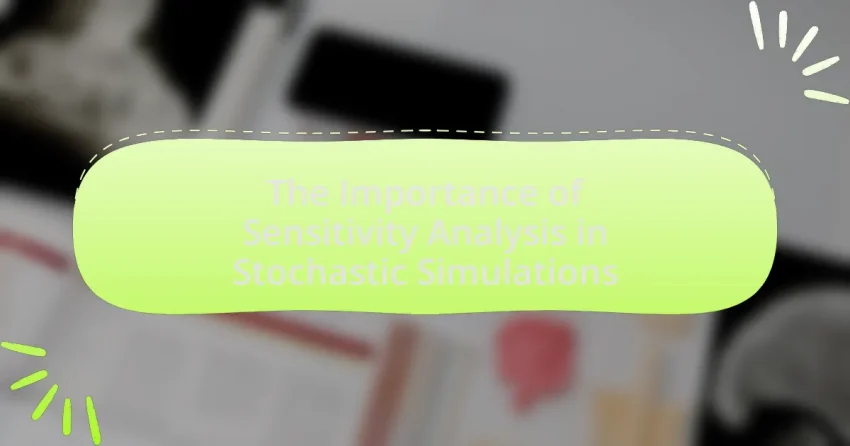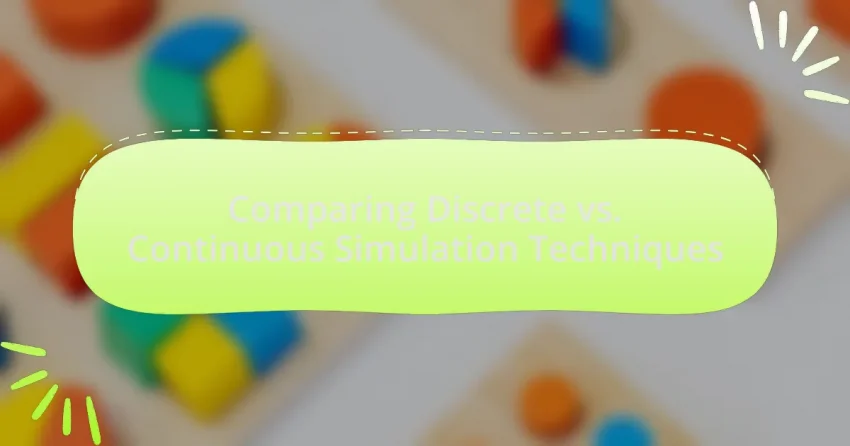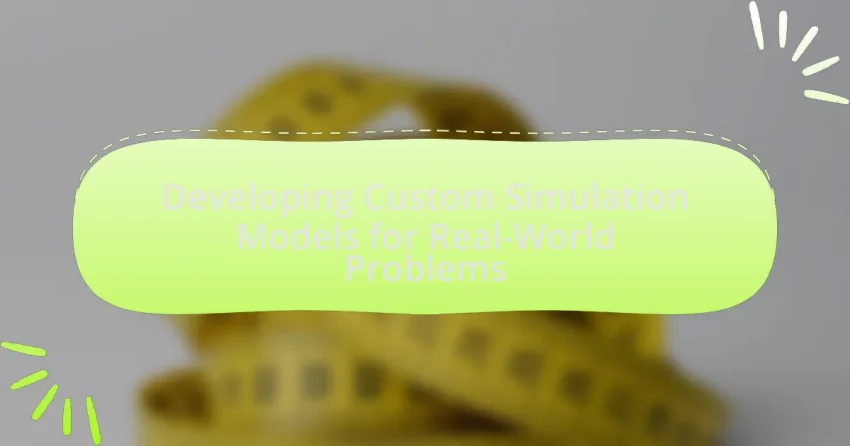The article focuses on future trends in simulation techniques for stochastic processes education, highlighting the integration of artificial intelligence, machine learning, and cloud computing to enhance predictive modeling and accessibility. It discusses the significance of interactive and hybrid simulations in improving student engagement and learning outcomes, as well as the role of interdisciplinary collaboration in…
Simulation Techniques
Welcome to the world of Simulation Techniques! In this category, you’ll discover a rich collection of articles that dive into the various methods used to model real-world systems. These techniques are essential in fields like engineering, healthcare, and social sciences. From simple simulations to complex algorithms, each piece aims to demystify the processes and tools that professionals use to predict outcomes and make better decisions.
As you explore, you’ll find practical guides, case studies, and insightful analyses. Whether you are a student curious about simulations or a professional looking to refine your skills, these articles are designed for you. You’ll learn about the importance of simulations, how to implement them, and their impact on innovation and efficiency. Get ready to engage with content that will enhance your understanding and open new pathways in your learning journey!
The Impact of Initial Conditions on Stochastic Simulations
Initial conditions are critical starting values or states in stochastic simulations that significantly influence the outcomes of the modeled systems. This article explores how initial conditions affect the trajectory, variability, and reliability of simulation results across various fields, including finance and weather forecasting. It discusses the sensitivity of stochastic models to these conditions, the types…
Teaching Stochastic Processes through Interactive Simulations
Teaching stochastic processes through interactive simulations is a method that enhances students’ understanding of complex systems influenced by randomness and uncertainty. The article outlines the significance of stochastic processes in various fields, differentiates them from deterministic processes, and highlights their key characteristics. It emphasizes the role of interactive simulations in engaging students, improving retention, and…
Practical Applications of Markov Chains in Simulation
Markov Chains are mathematical models that describe systems transitioning between states based on probabilistic rules, with significant applications in simulation across various fields such as finance, healthcare, and genetics. This article explores the fundamental components of Markov Chains, including states, transition probabilities, and the Markov property, which simplifies the modeling of complex stochastic processes. It…
The Role of Random Number Generation in Stochastic Simulations
Random Number Generation (RNG) plays a critical role in stochastic simulations by introducing variability and randomness, essential for accurately modeling complex systems characterized by uncertainty. This article explores the significance of RNG in various applications, including finance and scientific research, highlighting its impact on simulation outcomes and the importance of quality and distribution of generated…
Case Studies: Successful Applications of Simulation in Finance
The article focuses on case studies that highlight successful applications of simulation techniques in the finance sector. It examines how financial institutions utilize simulations, such as Monte Carlo methods, to enhance decision-making, assess risks, and optimize investment strategies. Key methodologies, notable examples from various industries, and the impact of these simulations on financial practices are…
Understanding the Law of Large Numbers through Simulation
The Law of Large Numbers is a fundamental principle in probability theory and statistics, stating that as the number of trials in a random experiment increases, the sample mean will converge to the expected value. This article explores the significance of the Law of Large Numbers, its application in statistical inference, and its distinction from…
The Importance of Sensitivity Analysis in Stochastic Simulations
Sensitivity analysis in stochastic simulations is a critical method for evaluating how variations in input parameters influence model outputs, thereby aiding in decision-making and risk assessment. The article outlines the functioning of sensitivity analysis, its key components, and the interaction of these components within stochastic simulations. It discusses various types of sensitivity analysis, including local…
Comparing Discrete vs. Continuous Simulation Techniques
The article focuses on comparing discrete and continuous simulation techniques, two fundamental approaches used in modeling systems. Discrete simulation techniques are characterized by event-driven processes that occur at distinct points in time, making them suitable for applications like queuing systems and inventory management. In contrast, continuous simulation techniques model systems that change fluidly over time,…
Developing Custom Simulation Models for Real-World Problems
Custom simulation models are specialized computational frameworks designed to replicate and analyze complex real-world systems, enabling organizations to predict outcomes and optimize operations. This article explores the significance of custom simulation models, highlighting their adaptability compared to standard models, key features, and applications across various industries such as healthcare, manufacturing, and logistics. It also outlines…









